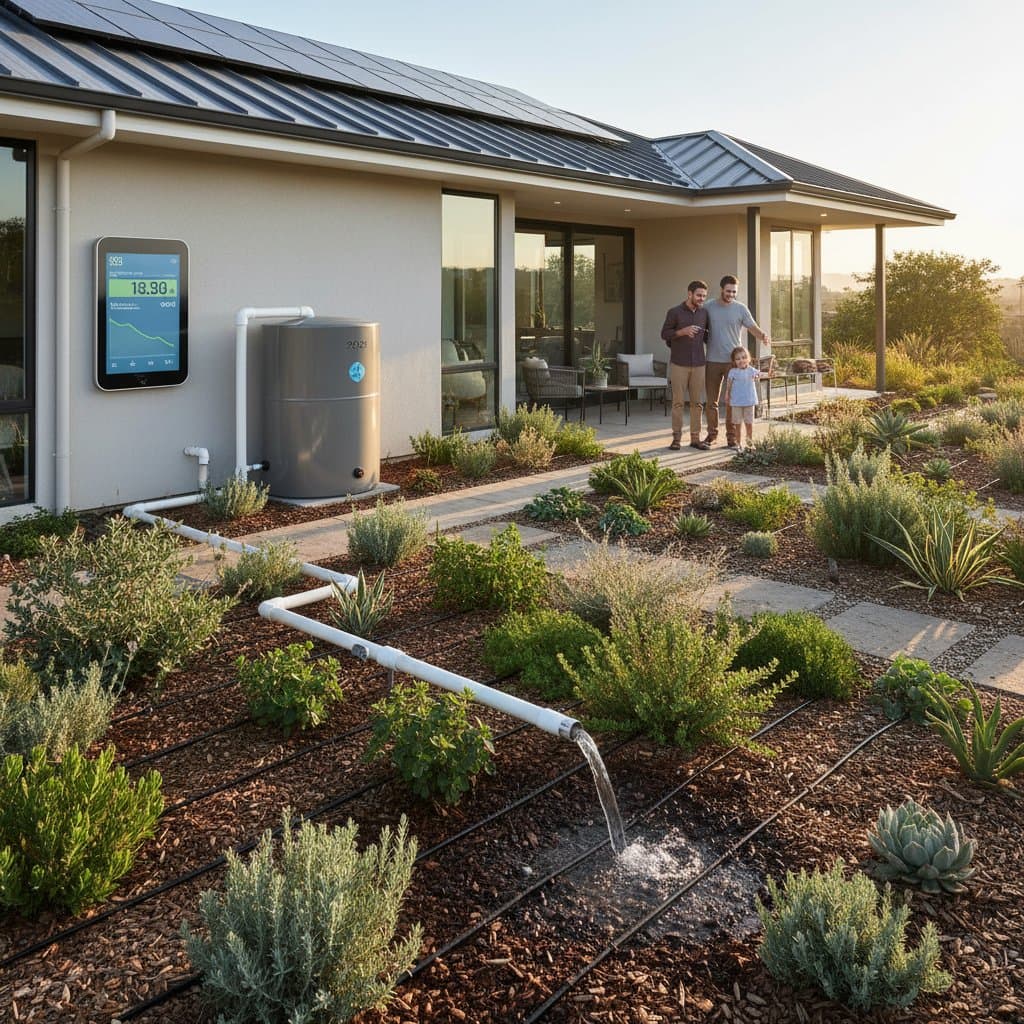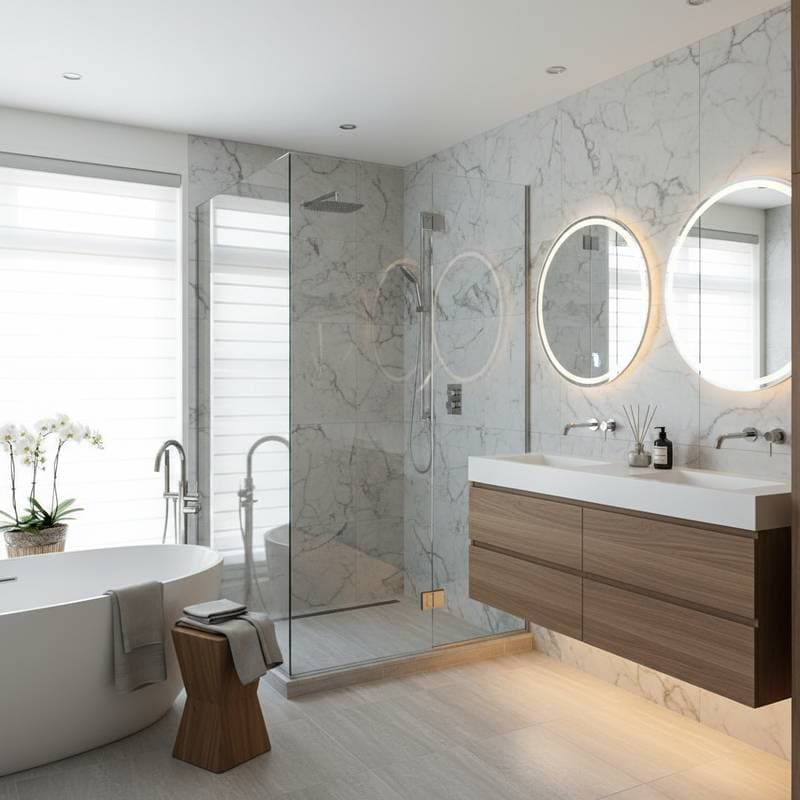Luxury or Budget? Unveiling 2025 Bathroom Remodel Costs
A bathroom remodel transforms the comfort and efficiency of your home. Whether updating a compact powder room or designing a serene master bath, understanding expenses enables informed decisions. A well-defined budget prevents unexpected costs and maximizes the return on your investment. This guide details current pricing for 2025, highlighting variations between modest and high-end options.
Essential Cost Overview
Homeowners typically allocate between $7,000 and $35,000 for a bathroom remodel. Basic refreshes in smaller areas range from $7,000 to $12,000, while standard renovations fall between $15,000 and $25,000. Premium projects, featuring advanced layouts and superior finishes, start at $35,000 and may reach $70,000 or higher. Primary influences include room size, structural modifications, material selections, and fixture standards.
To estimate your project, measure the space and list desired changes. Factor in local labor rates, which vary by region, and add a 10 to 15 percent contingency for unforeseen issues. This approach provides a realistic starting point.
Detailed Budget Components
Fixtures and Materials
Fixtures define the bathroom's aesthetic and utility. Select options that balance durability with design. Below is a breakdown of expected costs:
| Fixture | Budget Range | Luxury Range | Typical Dimensions |
|---|---|---|---|
| Vanity with Sink | $300 to $1,200 | $2,000 to $6,000 | 24 to 72 inches wide |
| Bathtub | $600 to $1,800 | $3,000 to $10,000 | 60 inches long |
| Shower System | $700 to $2,500 | $4,000 to $12,000 | 36 x 36 inches minimum |
| Toilet | $150 to $600 | $800 to $2,500 | 15 to 18 inches seat height |
| Flooring | $3 to $8 per sq. ft. | $10 to $25 per sq. ft. | Varies by material |
For instance, a basic vanity with quartz countertop and undermount sink installs for approximately $1,200. A freestanding acrylic tub adds $2,000 to $5,000, influenced by material and any required plumbing adjustments. Prioritize water-resistant materials like porcelain or vinyl to ensure longevity.
Labor and Installation
Professional labor constitutes 40 to 60 percent of the overall budget. Experts in plumbing, electrical, and tiling deliver precise results that meet safety codes. Rates begin at $50 per hour for general tasks and rise to $120 per hour for specialized services. Relocating pipes or updating wiring increases expenses by $1,500 to $5,000.
Hire contractors with verified credentials to avoid rework. Request multiple quotes and review portfolios of similar projects. This step safeguards quality and timeline adherence.
Plumbing and Electrical Enhancements
Many older residences require updates to pipes and circuits for safety and efficiency. Switching to PEX piping or installing GFCI outlets enhances reliability. Repiping a compact bathroom costs $1,000 to $3,000, while integrating LED lights or radiant floor heating ranges from $800 to $2,500.
Assess your home's age during planning. Consult a professional inspector to identify necessary upgrades early. These investments prevent future repairs and support modern amenities like low-flow fixtures.
Contrasting Budget and Luxury Approaches
Budget-Friendly Remodels
Budget projects emphasize visual improvements and practical layouts without major alterations. Common choices include:
- Retaining current plumbing positions
- Installing ready-made vanities and fiberglass surrounds
- Opting for ceramic tiles or resilient vinyl planks
- Refinishing the existing tub instead of replacement
These renovations cost $7,000 to $12,000 and conclude in two to four weeks. Such strategies work well for secondary bathrooms or investment properties, prioritizing resilience over personalization.
Focus on high-impact areas like fresh paint and updated hardware to refresh the space affordably. Source materials from discount suppliers to stretch funds further.
Luxury Remodels
High-end designs elevate the bathroom to a personal sanctuary. Signature elements often encompass:
- Bespoke cabinetry featuring soft-close mechanisms
- Countertops in natural stone or seamless composites
- Enclosed glass showers with multiple spray options
- Radiant heating systems and warming racks
- Ambient fixtures and interactive mirrors
Expenses begin at $35,000 and surpass $70,000 for expansive areas or premium selections like imported marble and custom metalwork. These upgrades boost home equity and daily satisfaction, particularly in primary suites.
Incorporate smart technology, such as voice-activated lighting, to enhance usability. Balance extravagance with timeless elements to maintain broad appeal.
Pitfalls to Avoid During Remodeling
Meticulous preparation minimizes overruns. Steer clear of these frequent errors:
- Neglecting thorough design reviews, which may reveal hidden plumbing or wiring challenges after demolition begins.
- Overlooking adequate airflow; install a fan delivering at least 1 CFM per square foot to combat humidity.
- Disregarding building codes, such as 15-inch clearances beside toilets or 30-inch shower entries.
- Choosing fashionable but fragile surfaces; for example, dark matte hardware accumulates stains quickly.
- Attempting advanced installations without expertise, like membrane sealing or circuit modifications.
Engage a licensed contractor to handle permits, moisture barriers, and alignments. Their guidance ensures compliance and structural integrity.
Incorporating Accessibility Features
For enduring usability, integrate inclusive design from the outset. A seamless shower entry measuring 36 inches wide, paired with integrated seating, facilitates mobility. Secure grab bars to studs at 33 to 36 inches high. Elevate toilets to 17 to 19 inches for comfort without sacrificing elegance.
Simple modifications, including lever-style faucets and broader doorways, promote independence across generations. Evaluate your household needs and consult accessibility guidelines to customize effectively.
Balancing DIY Efforts with Expert Help
Tackle straightforward elements, such as wall painting, molding installation, or fixture exchanges, to reduce costs by 20 to 30 percent. However, delegate intricate tasks like pipe work, grout application, or circuit handling to qualified professionals. Faulty seals or connections risk insurance issues and extensive fixes.
Assess your skills honestly and secure permits for any alterations. This hybrid method optimizes savings while upholding standards.
Planning Your Remodel Successfully
Establish a defined spending limit and prioritize features that align with your priorities. Allocate resources to durable essentials like efficient lighting if functionality leads your vision. Select versatile palettes and reliable mid-tier options to enhance marketability if resale motivates the project.
Gather inspiration from design resources and schedule consultations promptly. Track progress with a timeline to stay on course. Your renovated bathroom will deliver lasting comfort and value.





